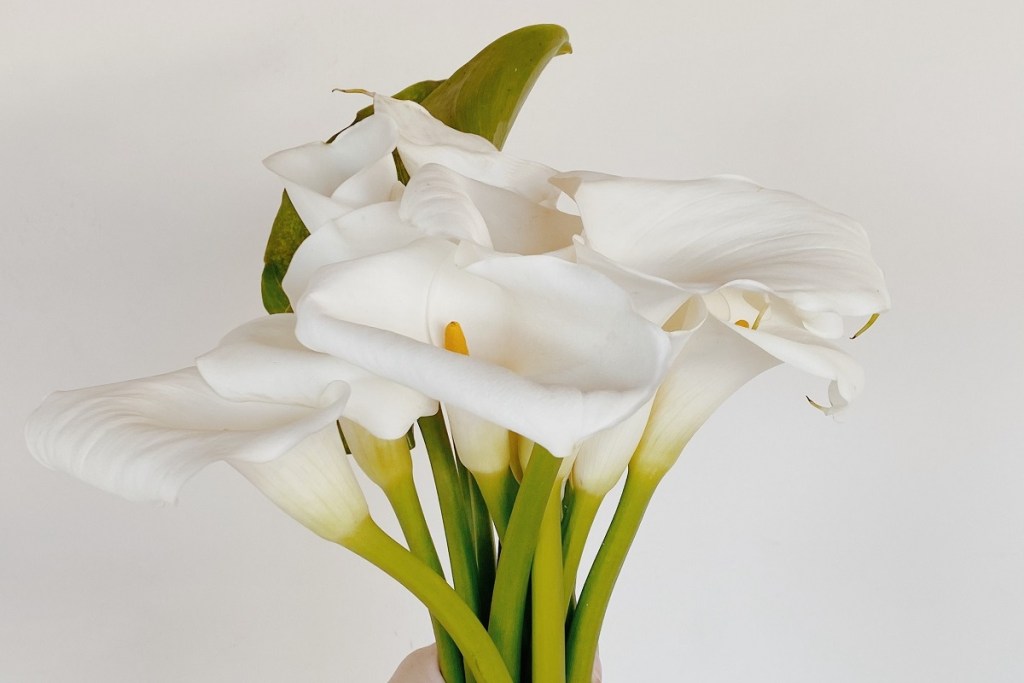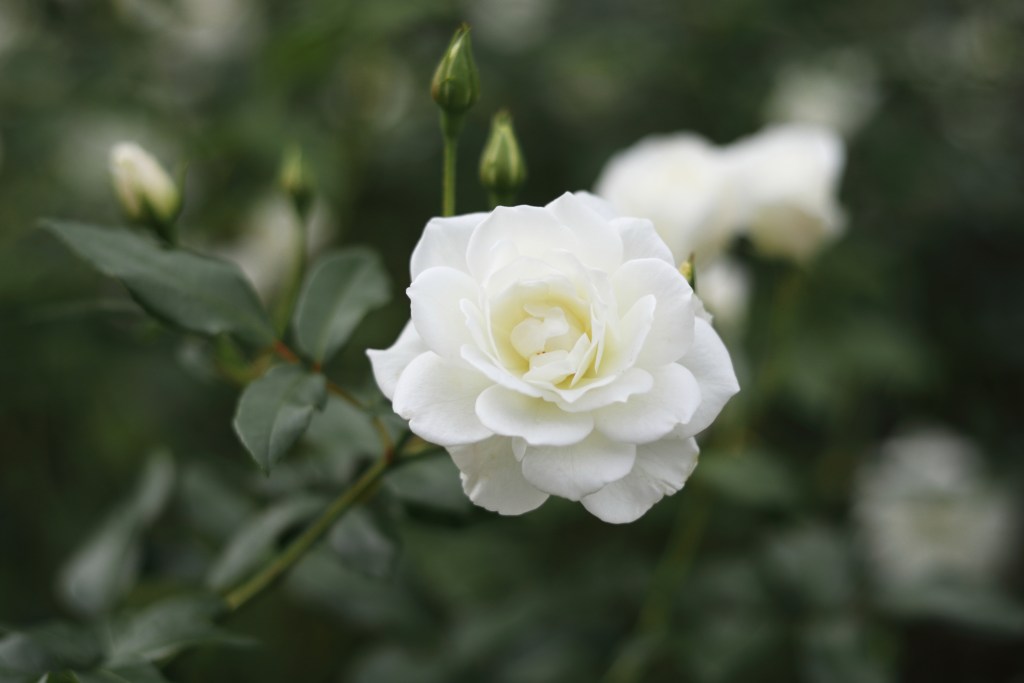To instantly elevate your garden, incorporate white flowers and foliage for an elegant touch. No matter what kind of garden style you have, white is a chameleon of a color that can work seamlessly as a border and groundcover. But just because white is neutral, it doesn’t mean that it has to be boring — textures can range from dainty Queen Anne’s lace flowers to polka-dotted begonia leaves. When planning your garden for spring and Easter, consider bringing the following lush white plants into your landscape design.

Calla lily
A beautiful addition to many floral arrangements, calla lilies make for a low-maintenance border flower in tropical areas in zones 8 through 10 — in California, it can sometimes even be considered invasive. Although the blooms come in many colors, you can get them in classic white with a yellow, finger-like spadix to upgrade your landscape. Additionally, some varieties even come with lush green leaves with white freckles. With blooms appearing in summer, calla lilies thrive in moderately moist, well-draining soil and tolerate everything between full sun and partial shade. Use a well-balanced fertilizer throughout the growing season to keep them happy — just avoid nitrogen-heavy formulas if you want flowers to appear. If you have kids or pets around, keep them away from this flower, as all parts of it are toxic.
Queen Anne’s lace
If you want a more subtle white flower to fill out your garden, give your landscape a whimsical touch with Queen Anne’s Lace, a wildflower herb with a carrot-like taproot. (In fact, it is sometimes used as a substitute for carrot.) Though considered a weed, this self-seeding beauty has a delicate appearance thanks to its fuzzy stems and clusters of tiny white summer blooms. If you have a younger plant, keep in mind that it won’t put out flowers until around its second year of growth. When it comes to giving Queen Anne’s lace the right conditions, you won’t need to worry too much about it. Yes, it will thrive in loose soil with full sun. But it can also tolerate poor soil, partial shade, drought, and little fertilizing in zones 3 through 9.

Iceberg rose
If red or pink roses aren’t your thing, cultivate beautiful white iceberg roses in your garden. What’s great about this easy-care variety is that it’s essentially disease-free and virtually thornless. Suitable for zones 5 through 9, it can vigorously push out fragrant blooms throughout the summer. You want to mainly give it two conditions: full sun and weekly watering. The iceberg rose can do quite well when you train it on a trellis, should you want to give it shape with an arch or some other form.
Begonia maculata
Not only can the begonia maculata push out lush clusters of white flowers, but it also features dark green foliage with bold white polka dots. Though often kept as a houseplant, the begonia maculata, also known as the angel wing begonia, can thrive outdoors as a perennial in zones 10 or 11 (or at least anywhere where the temperature remains above 50 degrees Fahrenheit). It does best in partial shade and with moist soil — if it receives too much light or stays in dry soil too long, however, it may start to develop brown edges. If you keep it indoors or on your patio, it may help to mist it regularly during drier months or leave your planter on a pebble tray. During the spring and summer, feed your plant a high-phosphorus fertilizer to help it push out blooms.

Amaryllis “white nymph”
Though common as a holiday flower grown in clear water vases, amaryllis also thrives in soil as a garden bloom throughout the spring and summer. Occasionally tinged with red, the white nymph variety features extra-large, frilly petals for a showy display and can grow up to 16 inches in height. In zones 8 through 11, you can even keep them outdoors as perennials. They’re relatively low maintenance, as long as you give them plenty of bright indirect light and water them consistently. You can treat them with an all-purpose fertilizer after they bloom, but their fertilizing needs are low during the dormancy period. When your amaryllis goes dormant, you can let the soil dry out before watering.
Lily of the valley
A delicate symbol of love, the lily of the valley is, despite its name, part of the asparagus family rather than a true lily. Though whimsical and dainty in appearance with its tiny bell-shaped flowers, it’s actually a hardy plant that can adapt to a wide range of conditions. It can thrive in everything from partial sun to full shade — just keep it away from harsh afternoon light. To encourage blooms, water the soil consistently and feed your plant with a slow-release fertilizer throughout the growing season. Like the calla lily, the lily of the valley is toxic, so be careful with who comes in contact with it.
If you’re struggling to brainstorm landscape ideas for spring, start looking at white plants. White can complement virtually any color — you can go sweet and subtle with lily of the valley blooms or bold and showy with white amaryllis flowers. Whatever you end up choosing, white flowers can bring elegant, fascinating textures to your Easter garden without being too overwhelming.
Editors' Recommendations
- Everything you need to know about choosing the best rocks for landscaping
- 6 tips you should keep in mind when building your own drought-tolerant garden
- Grow your indoor or outdoor garden and support these Black-owned plant shops for Black History Month
- Do you live in climate zone 10? Here’s our guide to choosing the perfect climate zone 10 plants
- What to do with an old Christmas tree: 6 ways to recycle your tree after the holidays




